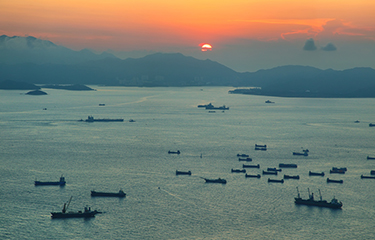The vigor with which the government has prosecuted its crackdown in domestic waters has certainly been unprecedented this year in China – it seems that every village government in the country has had a publicity event that involves pouring bags of fish seedlings into local waters.
China appears to also be playing a clever public relations game by embracing neighbors in joint fisheries rehabilitation projects that are also helping to keep a lid on simmering disputes over territorial waters and illegal fishing.
For instance, last week, a delegation of Filipino fishery officials led by the deputy head of the agriculture and fishery ministry in Manila travelled to Beijing for the third annual “China Philippines United Fishery Committee.” The meeting was a recap on all that’s been achieved in three years of activity, according to a Chinese summary of the meeting featured prominently in local media reporting.
“China continues to donate grouper fish seedlings to the Philippines…we have been training Filipino fishermen in aquaculture and algae technology and we are together fighting illegal fishing,” noted a statement from the Chinese ministry. China and the Philippines are working together to resolve any territorial disputes, according to the ministry.
Meanwhile, Chinese state TV didn’t devote much air time to the update from the arbitral tribunal at the Permanent Court of Arbitration in The Hague, which found in favor of Manila’s case against Beijing’s claims in the South China Sea in July 2016. Convened under the compulsory dispute settlement provisions of the United Nations Convention on the Law of the Sea (UNCLOS), the tribunal’s five arbitrators ruled overwhelmingly in the Philippines’ favor. Three years on, China is in compliance with just two out of the 11 parts making up the ruling.
The promise of training and seedlings for fishermen hasn’t seemed to work out for those Filipino fishermen angry over the ramming and sinking of Philippine fishing boat Gem-Ver – which was anchored near Recto Bank, ready for deep-sea fishing in the West Philippine Sea – by Chinese patrol boats last month. The Philippine government has since downplayed the incident.
There’s a similar story in the Yellow Sea, where the China Korea Fishery Resources Protection Project has seen 400,000 seedlings released into the seas between China and Korea this summer. The number of incidents involving Korean enforcement vessels and Chinese trawlers is down 45 percent on the same period in 2016, according to China.
“Inseparably close cooperation between China and Korea has drastically reduced the number of incidents involving [Chinese] vessels,” according to Zhang Xian Lian, head of the fishery enforcement office at the Ministry of Agriculture, which also handles fisheries. He claims efforts to reinstate fisheries in the Yellow Sea are “having outstanding results.”
Chinese national TV recently showed Chinese and Korean officials aboard a specially appointed ship with chutes to release seedlings into the sea. China has spent CNY 654 million (USD 95 million, EUR 84 million) between 2017 and 2018 in replenishing the Yellow Sea with seedlings, according to Zhang, who has signalled that the country’s targets for increased seafood consumption will come from more international cooperation in aquaculture sites.
Access is everything for the authorities in Beijing, who need to increase China’s seafood sourcing even as local resources are squeezed by environmental clean-ups. As it cracks down at home, China’s government has set an ambitious target to sharply increase consumption of seafood by the Chinese populace over the next ten years. In its 2018-2027 Outlook for Agriculture report, China’s Ministry of Agriculture projected the per capita consumption of aquatic products would increase to 25 kilograms per capita overall, with the figure rising to 30 kilograms per capita in urban areas. This would represent a major increase in consumption given that in 2015, the figure was 14.3 kilograms and 5.3 kilograms respectively for urban and rural areas, according to Chinese government data (which, unlike FAO data, doesn’t count out of home consumption).
Of course, there’s plenty of demand from around the world for Chinese aquaculture investment and expertise. China will no longer seek to solely drive exports of seafood, but will rather export aquaculture expertise and seek to enter into “cooperative relationships” with the 160 countries targeted by China’s Belt and Road Initiative (also known as One Belt One Road), according to Zhang Xianliang, director of the Fisheries and Fishery Administration Bureau of the Ministry of Agriculture and Rural Affairs.
China’s proposition for cooperation comes from a position of strength. But it’s also capable of embracing smaller economies like Korea and the Philippines strongly enough to soften and silence legitimate protests over China’s illegal fishing and territorial claims. Such a strategy will be tested elsewhere as negotiations on global fisheries management, including with the WTO talks on the ending of fishery subsidies, which are expected to come to a head later this year.







